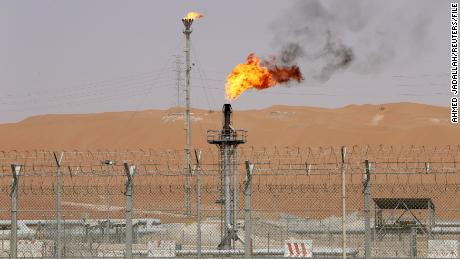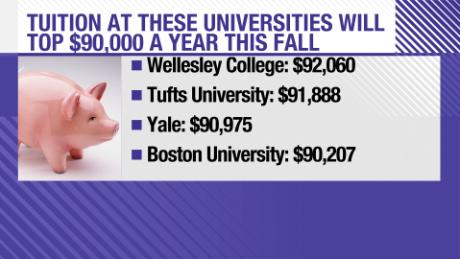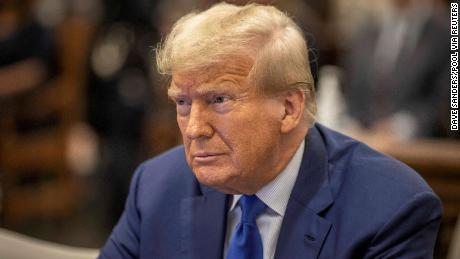New York (CNN Business)OPEC and its allies are once again being forced to consider dramatic action to avert a crash in oil prices.
The Saudi Arabia-led cartel and Russia (collectively called "OPEC+") are widely expected to announce in Vienna on Friday an agreement to extend production cuts designed to put a floor beneath prices.
But a simple rollover of existing cuts by OPEC+ may not stanch a looming ocean of American oil expected to arrive next year.
If OPEC+ fails to make these deeper production cuts, the world oil market will be oversupplied by about 800,000 barrels per day during the first half of 2020, according to consulting firm Rystad Energy.
The ensuing supply glut would spark a "significant oil price correction," driving Brent crude into the low $40s for a short period of time, Rystad predicted. That represents a plunge of about 30% from current levels of nearly $63 a barrel.
"The outlook will be bleak if OPEC+ fails to agree on additional cuts," Bj├Ėrnar Tonhaugen, head of oil market research at Rystad Energy, wrote in a note published on Tuesday.
Oil traders expect OPEC+ will reach a deal to extend the production cuts by at least several months. The existing production cut agreement is due to expire in March.
"Anything short of a rollover to June and the market should brace for some very bearish price action," analysts at consulting firm FGE wrote in a report on Wednesday.
Oil prices soared more than 3% on Wednesday on hopes for OPEC action. Iraq's oil minister expressed support to extend the production agreement for all of 2020, according to Reuters.
Record-setting non-OPEC output
The restraint by OPEC and Russia has largely succeeded in supporting prices, though they remain well below the $70 level hit in October 2018.
The problem is that non-OPEC nations, led by the United States, continue to ramp up production.
Oil output from non-OPEC countries is expected to surge by a record 2.3 million barrels per day in 2020, according to Rystad. That would easily top the previous record of 1.96 million set in 1978.
Not surprisingly, the US shale oil revolution is the biggest contributor to the coming gush of oil. US production is expected to climb by another 1.1 million barrels per day in 2020, Rystad said.
But it's not just about US shale oil. Norway and Brazil are also expected to add a combined 1 million barrels per day of oil production next year, according to Rystad. Canada and Guyana are poised for growth as well.
Another headache for OPEC: Some of its members, including Nigeria and Iraq, have not adhered to the cartel's production quotas. Those extra barrels are adding to the oversupply problem.
Iraq has "basically ignored the OPEC production cut deal," said Matt Smith, director of commodity research at ClipperData.
Will Saudi make deeper cuts?
Saudi Arabia, OPEC's de facto leader, has shouldered the brunt of the production cuts. However, there are doubts about whether Saudi Arabia is willing to take even more aggressive steps when some of its fellow OPEC members are pumping more than they are supposed to.
"It is very unlikely that the kingdom will formally agree to continue producing at this level unless other OPEC+ members formally commit to cutting deeper as well," FGE wrote.
Then again, Saudi Arabia can't afford to let oil prices collapse either. The kingdom relies on oil revenue to pay for its massive domestic and military spending.
Just to break even, Saudi Arabia needs oil prices of about $84 a barrel, according to the IMF. Lower prices would force Saudi Arabia to drain its shrinking pile of cash, borrow money or scale back dividends paid by Aramco, the national oil company.
This uncertain backdrop has forced oil companies to strengthen their balance sheets by paying down debt and raising cash. No one wants a repeat of the wave of bankruptcies caused by the 2015-2016 oil crash.
"We've decided to embrace volatility," Ryan Lance, CEO of ConocoPhillips (COP), told Bloomberg News on Wednesday. "We can't predict where it's going to go."





















